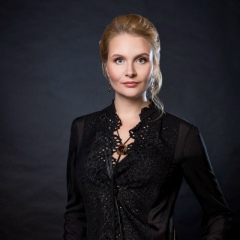Рациональное развитие памяти
До 12 лет вальдорфская педагогика отвергает метод «наглядного обучения» в виду того, что формирование понятий естественно для природы ребенка после 12 лет. Взамен метода «наглядного обучения» предлагается метод «обучения в сопровождении чувств». Процесс запоминания облегчается благодаря включению движения чувств у ребенка, которые являются опорой для памяти.
Современная психология отмечает, что эмоциональная память одна из самых долговременных. Задача педагога — преодолеть безучастное отношение учеников к учебному материалу. В результате активного и живого стиля работы во время урока включается жизнь внутреннего чувства с ее радостью и болью, с ее приятным и неприятным, напряжением и расслаблением. Можно использовать в обучении то, что захватывает ребенка, что ему интересно. Например, чувство ритма является насущной потребностью ребенка до полового созревания. Поэтому в данном возрасте ребенку легко дается заучивание большого количества стихотворений. Также легко и весело заучивают дети таблицу умножения под ритмические хлопки и топанье ногами
До 12 лет вальдорфская педагогика отвергает метод «наглядного обучения» в виду того, что формирование понятий естественно для природы ребенка после 12 лет. Взамен метода «наглядного обучения» предлагается метод «обучения в сопровождении чувств». Процесс запоминания облегчается благодаря включению движения чувств у ребенка, которые являются опорой для памяти.
Современная психология отмечает, что эмоциональная память одна из самых долговременных. Задача педагога — преодолеть безучастное отношение учеников к учебному материалу. В результате активного и живого стиля работы во время урока включается жизнь внутреннего чувства с ее радостью и болью, с ее приятным и неприятным, напряжением и расслаблением. Можно использовать в обучении то, что захватывает ребенка, что ему интересно. Например, чувство ритма является насущной потребностью ребенка до полового созревания. Поэтому в данном возрасте ребенку легко дается заучивание большого количества стихотворений. Также легко и весело заучивают дети таблицу умножения под ритмические хлопки и топанье ногами
Rational development of memory
Until the age of 12, Waldorf pedagogy rejects the method of "visual teaching" in view of the fact that the formation of concepts is natural for the nature of a child after 12 years. Instead of the "visual teaching" method, the "teaching accompanied by the senses" method is proposed. The process of memorization is facilitated by the inclusion of the movement of feelings in the child, which are the support for memory.
Modern psychology notes that emotional memory is one of the longest. The task of the teacher is to overcome the indifferent attitude of pupils to the educational material. As a result of an active and lively style of work, during the lesson, the life of inner feeling is turned on with its joy and pain, with its pleasant and unpleasant, tension and relaxation. You can use in teaching what captures the child, what is interesting to him. For example, a sense of rhythm is a vital need for a child before puberty. Therefore, at this age, it is easy for a child to memorize a large number of poems. It is also easy and fun for children to memorize the multiplication table with rhythmic claps and stamping feet
Until the age of 12, Waldorf pedagogy rejects the method of "visual teaching" in view of the fact that the formation of concepts is natural for the nature of a child after 12 years. Instead of the "visual teaching" method, the "teaching accompanied by the senses" method is proposed. The process of memorization is facilitated by the inclusion of the movement of feelings in the child, which are the support for memory.
Modern psychology notes that emotional memory is one of the longest. The task of the teacher is to overcome the indifferent attitude of pupils to the educational material. As a result of an active and lively style of work, during the lesson, the life of inner feeling is turned on with its joy and pain, with its pleasant and unpleasant, tension and relaxation. You can use in teaching what captures the child, what is interesting to him. For example, a sense of rhythm is a vital need for a child before puberty. Therefore, at this age, it is easy for a child to memorize a large number of poems. It is also easy and fun for children to memorize the multiplication table with rhythmic claps and stamping feet
У записи 4 лайков,
1 репостов.
1 репостов.
Эту запись оставил(а) на своей стене Андрей Калякин

























